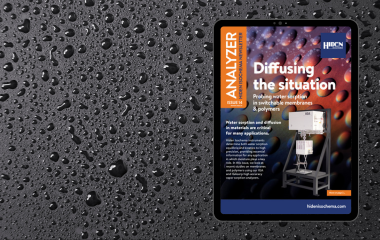How to carry out membrane analysis for separation applications?
Membrane analysis is a pivotal technique in the field of separation processes. It involves the study of the selective permeability and gas permeation properties of membranes, primarily polymeric membranes. With the rise in demand for efficient separation processes, the need for robust and accurate membrane analysis has never been more pronounced.
The Importance of Polymeric Membranes
Polymeric membranes are at the forefront of modern separation processes. Their unique properties, derived from their membrane materials, make them ideal for various applications. The efficacy of these membranes must be determined through rigorous membrane analysis. One can optimise their performance in real-world applications by understanding the solubility and diffusivity of gases and vapours within these membranes.
Key Concepts in Membrane Analysis
Gas and Vapor Sorption
Gas and vapor sorption is a cornerstone of membrane analysis. It provides insights into how gases and vapours interact with the membrane material. The IGA-001, for instance, is adept at determining pure gas sorption isotherms and kinetics. This data is invaluable for understanding solubility and transport behaviour. The IGA-002 and IGA-003 offer precise measurements for those looking to study vapours, with the latter boasting vapor generation capability. The XEMIS is another instrument that can be employed for gas and vapor sorption studies.
Gas Adsorption Properties
The gas adsorption properties of a membrane are crucial for its performance in gas separation technology. Instruments like the IMI, IGA, and XEMIS analysers are adept at measuring vital parameters such as working capacities, selectivities, and adsorption enthalpies. Furthermore, Hiden Analytical mass spectrometers can be integrated with dynamic flow instruments like the IGA-003, IGA-100, and IMI-FLOW. This setup allows for a detailed analysis of changes in gas composition downstream from the sample.
Membrane Testing Reactors
A membrane testing reactor is a crucial apparatus in the realm of membrane analysis. It provides a controlled environment where membranes can be subjected to real-world conditions. By simulating these conditions, one can obtain accurate data on the performance of polymer membranes in separation processes.
Cross Flow and Its Relevance
Cross flow is a technique wherein the feed stream flows tangentially to the membrane surface. This method reduces the build-up of solutes on the membrane surface, enhancing the efficiency of the separation process. Understanding cross-flow dynamics is essential for optimising membrane-based separation applications. The MBR membrane permeation analyser is designed for measurement of gas permeation through polymeric membranes, and includes cross flow mode for applied gas mixtures with downstream analysis of the permeate gas.
Discover Hiden Isochema’s Range of Analysers
With its myriad techniques and instruments, membrane analysis is the bedrock of modern separation processes. One can harness their full potential in various applications by understanding the nuances of polymeric membranes, from their gas sorption properties to their breakthrough curves and selective permeation properties.
At Hiden Isochema, we pride ourselves on offering a comprehensive suite of analysers tailored for membrane analysis. From the IGA series to the XEMIS, our instruments are designed to provide accurate and reliable data for all your membrane testing needs. Dive deeper into our range and discover how we can elevate your research and applications. Explore Hiden Isochema’s membrane analysers today.
References and further reading
- Favre, Eric. (2022). ‘The Future of Membrane Separation Processes: A Prospective Analysis’. Frontiers in Chemical Engineering. Volume 4.


